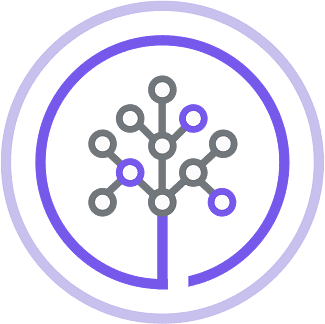Transformers for Generative AI Language Models
Loading...
Course

Transformers for Generative AI Language Models
Build job-ready skills for language modeling in just 3 weeks. Plus, valuable practical experience and a credential.
Self-Paced
Mentored
Intermediate
Duration
Generative AI is a continuously evolving technology, and transformer language models are high in demand. According to Gartner, by 2026, 75% of businesses will use generative AI to create synthetic customer data. This Transformers for Generative AI Language Models course builds job-ready skills that will fuel your AI career in just 3 weeks.
In this course, youll get an overview of how to use transformer-based models for natural language processing (NLP). Youll also learn to apply transformer-based models for text classification, focusing on the encoder component.
Youll learn about positional encoding, word embedding, and attention mechanisms in language transformers and their role in capturing contextual information and dependencies.
Additionally, you will be introduced to multihead attention and gain insights on decoder-based language modeling with generative pre-trained transformers (GPT) for language translation, training the models, and implementing them in PyTorch.
Further, youll explore encoder-based models with bidirectional encoder representations from transformers (BERT) and train using masked language modeling (MLM) and next sentence prediction (NSP). You will apply transformers for translation by gaining insight into the transformer architecture and performing its PyTorch implementation.
Additionally, youll get valuable hands-on practice in online labs for attention mechanisms, positional encoding, decoder GPT-like models, and pretraining BERT models.
This course comprises three purposely designed modules that take you on a carefully defined learning journey.
It is a self-paced course, which means it is not run to a fixed schedule with regard to completing modules. It is anticipated that you will complete the course in 8 hours. However, as long as the course is completed by the end of your enrollment, you can work at your own pace. And dont worry, youre not alone! You will be encouraged to stay connected with your learning community through the course discussion space.
The materials for each module are accessible from the start of the course and will remain available for the duration of your enrollment. Methods of learning and assessment will include discussion space, videos, reading material, quizzes, hands-on labs, quizzes and final assignment.
Once you have successfully completed the course, you will earn your IBM Certificate.
You will be able to:
- Apply encoding and masking techniques to improve transformer model performance.
- Build and fine-tune GPT models for text generation tasks.
- Use BERT for language understanding and contextual embeddings.
- Implement models that translate, summarize, and transform text across domains.
- Leverage core PyTorch functions to design, train, and optimize NLP models.
- Ideal for students and professionals with Python and PyTorch skills seeking to master transformers, GPT, and BERT for real-world generative AI applications.
- Basic knowledge of generative AI and working knowledge of machine learning with Python and PyTorch, and neural networks is required.
Course Outline
Why Learn with SkillUp Online?
We believe every learner is an individual and every course is an opportunity to build job-ready skills. Through our human-centered approach to learning, we will empower you to fulfil your professional and personal goals and enjoy career success.
Reskilling into tech? We’ll support you.
Upskilling for promotion? We’ll help you.
Cross-skilling for your career? We’ll guide you.

Personalized Mentoring & Support
1-on-1 mentoring, live classes, webinars, weekly feedback, peer discussion, and much more.

Practical Experience
Hands-on labs and projects tackling real-world challenges. Great for your resumé and LinkedIn profile.

Best-in-Class Course Content
Designed by the industry for the industry so you can build job-ready skills.

Job-Ready Skills Focus
Competency building and global certifications employers are actively looking for.
FAQs
This transformers NLP course covers transformer architectures, attention mechanisms, positional encoding, multihead attention, GPT-like decoder models, BERT pretraining with masked language modeling and next sentence prediction, language modeling, text classification, and language translation. Learners gain hands-on experience with PyTorch to implement NLP transformer models.
Yes. A working knowledge of Python and PyTorch, along with basic understanding of machine learning and neural networks, is recommended to successfully complete this NLP with Transformers course.
Attention mechanisms allow transformers to focus on relevant parts of input sequences, capturing contextual relationships between words or tokens. This is essential for building effective NLP with transformer models for tasks like classification, translation, and text generation.
Encoder-based models like BERT are designed to understand input sequences bidirectionally and excel at classification and NLU tasks, while decoder-based models like GPT generate text autoregressively and are used for language modeling, text generation, and translation.
Yes. You will learn positional encoding to capture sequence order information and multihead attention to enhance contextual understanding in transformer models. Hands-on labs demonstrate how to apply these concepts in PyTorch.
Yes. Learners complete hands-on labs for attention mechanisms, positional encoding, GPT-like decoders, BERT pretraining, and transformer-based text classification and translation tasks.
Yes. The course guides you on creating GPT-like models for language modeling and text generation using PyTorch functions and best practices in NLP transformer implementation.
Yes. You will implement pretraining of BERT models using masked language modeling (MLM) and next sentence prediction (NSP), gaining practical experience with encoder-based transformers.
This course provides step-by-step guidance on how to create NLP transformers with PyTorch. You will implement encoder-decoder architectures, build GPT-like models for text generation, and pretrain BERT models using masked language modeling and next sentence prediction. Hands-on labs walk you through applying attention mechanisms, positional encoding, and multihead attention in real-world NLP tasks.
The course demonstrates applying encoder-based transformers for text classification and decoder-based transformers for language translation, showing both theory and PyTorch implementation for real-world tasks.
You will learn how to implement transformer architectures, build and pretrain GPT and BERT models, apply attention mechanisms, positional encoding, and multihead attention, and develop NLP solutions for classification, translation, and generative AI tasks.
Yes. Learners receive an IBM Certificate upon completion of the Transformers NLP course, which can be added to a resume to demonstrate expertise in generative AI language models.
The course is designed to be completed in approximately 8-10 hours, allowing learners to build fundamental transformer skills and practical experience efficiently.
Transformers capture long-range dependencies, contextual relationships, and parallelize training, making them highly effective for generative AI tasks like text generation, language translation, and natural language understanding.
Yes. The course covers evaluation approaches for transformer models, including assessing model performance for language modeling, classification, and translation tasks, ensuring learners can validate and optimize their NLP transformer implementations.
Absolutely. This Transformers NLP course equips learners with job-ready skills, practical PyTorch experience, and a certification to support careers in NLP, generative AI, and AI model development.
Course Offering
Type of certificate
IBM Certificate
About this course
03 Modules
05 Skills
Includes
Discussion space
06 Hands-on labs
02 Practice quizzes
02 Graded quizzes
Create
Pretraining BERT Models
Data Preparation for BERT
Transformers for Translation
Exercises to explore
Attention Mechanism and Positional Encoding
Applying Transformers for Classification
Decoder GPT-like Models
This course has been created by


IBM Skills Network
IBM Skills Network Team
Newsletters & Updates
Subscribe to get the latest tech career trends, guidance, and tips in your inbox.
